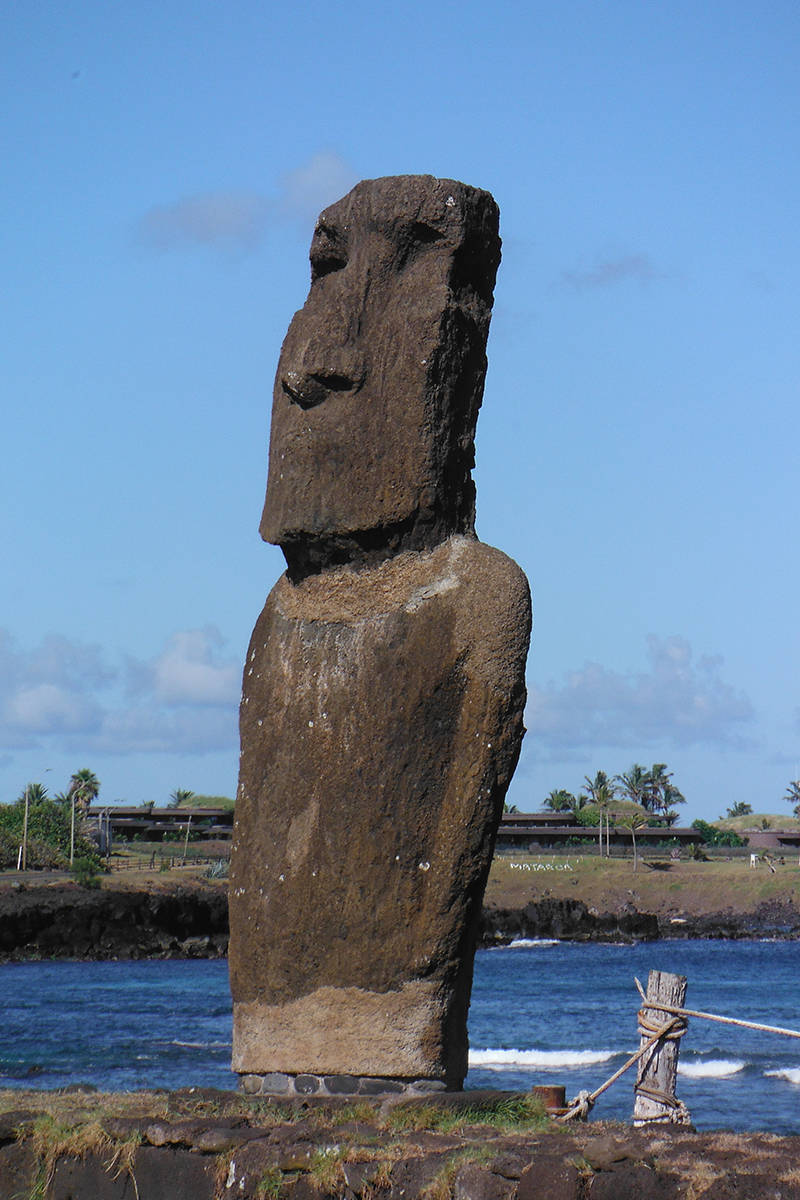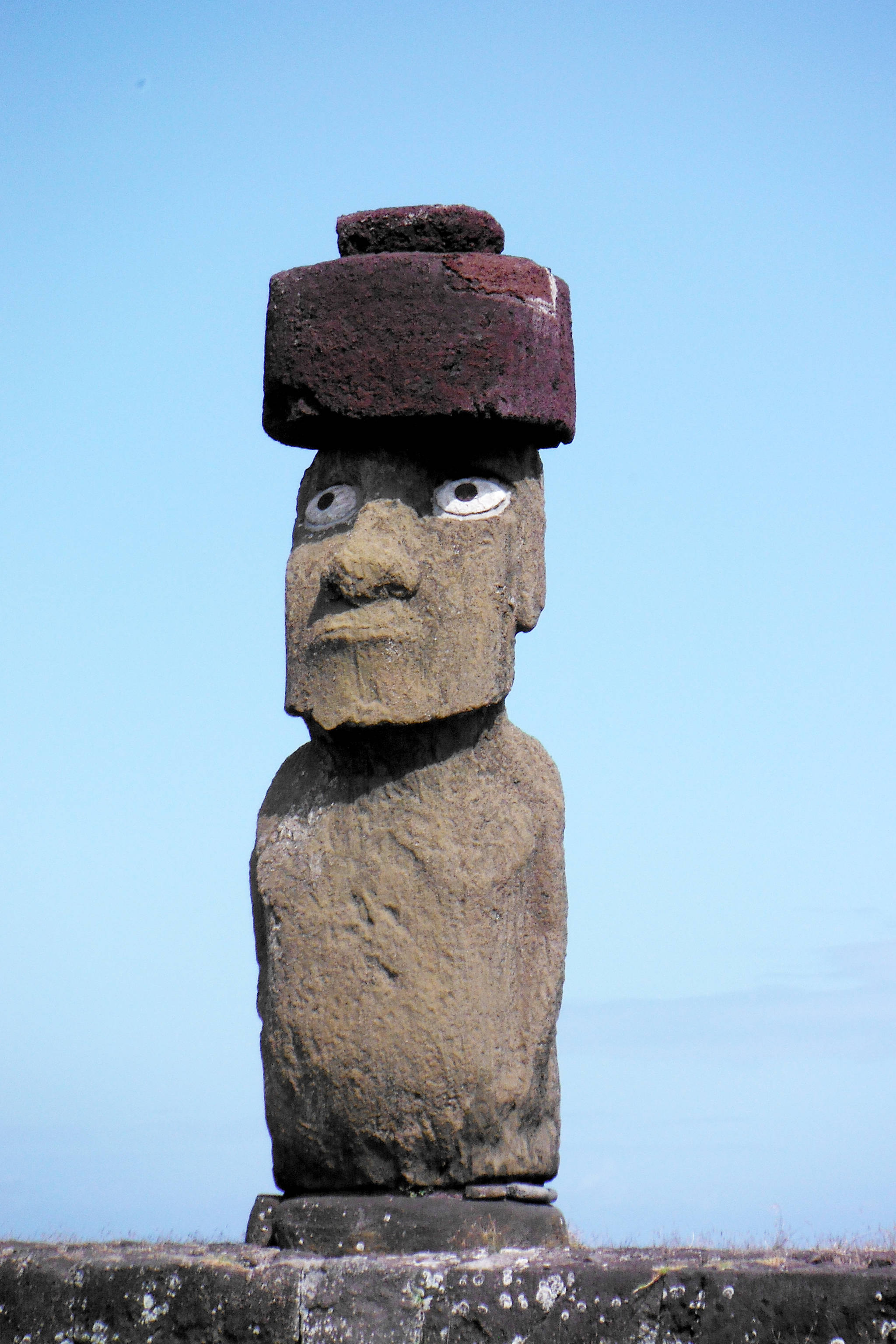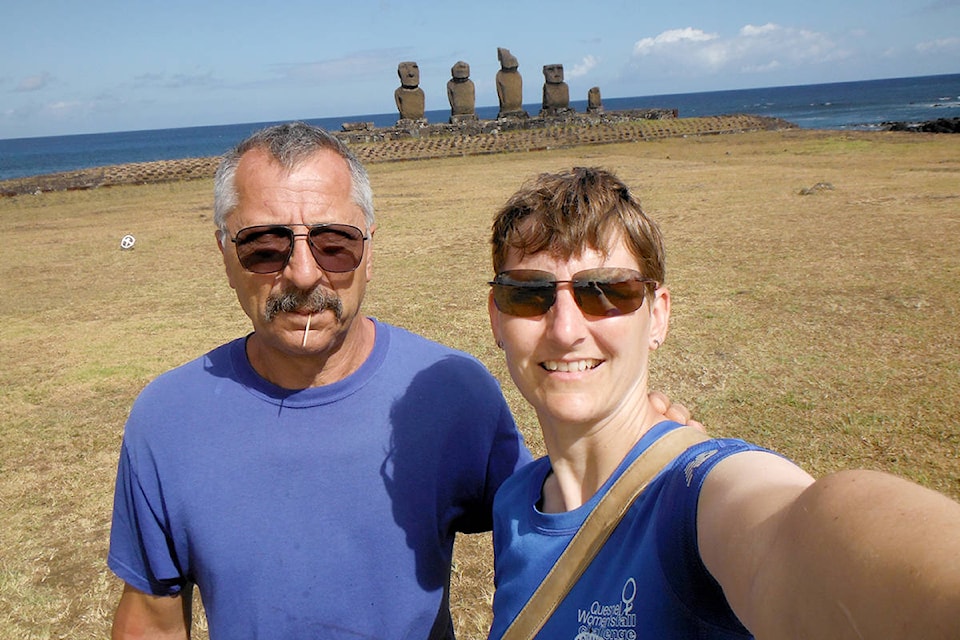Bianca Scheidt and her husband Bernie spent five days exploring Easter Island, a remote island far off the coast of Chile, where towering stone statues featuring carved faces look out over the landscape.
The island is small, just 163 kilometres squared, and has only a few thousand residents. The nearest inhabited land is more than 2,000 kilometres away, making it one of the most remote places in the world.
To get there, Scheidt had to take a flight from Santiago, Chile — a flight which only runs once a day.
But for Scheidt, it was worth it.
“Easter Island was always on my bucket list,” she says. “As a kid, I watched the movie Rapa Nui, and I just liked the story and all the historic stuff that’s behind it. And so I decided one day, I need to visit this island because it’s pretty … adventurous. And there is so much history in it.”
The movie Rapa Nui, which came out in 1994, was loosely based on the legends of Easter Island, and follows a civil war between two tribes. Rapa Nui is also the name of the aboriginal Polynesian inhabitants of the island.
And in 2016, as part of a longer trip around northern Chile, Scheidt and her husband made it happen.
Every February, says Scheidt, there’s a festival on the island, with markets, music, barbeque and shows featuring traditional clothing and dance.
The two-week Tapati Festival also features sporting events. One such event is the Tau’a Rapa Nui Pa’ari, a triathlon.
The triathlon sees competitors paddle reed boats across a volcanic lagoon, then walk the perimeter of the lagoon carrying 55 pounds of bananas, then another lap without the bananas, followed by a reed-float-assisted swim back across the lagoon.
There’s also a nice beach on the island, with the ability to take out a boat and go paddling on the ocean.
But perhaps the most mysterious — and certainly the most famous — part of the island is the moai, the towering stone statues carved into faces placed around the island.
The moai have their backs to the sea, and many believe they were created to protect the island, but little is known for certain about the statues or the people who built them. One long-held theory suggests that once the islanders first came to Easter Island and built the statues, they ruined their society with infighting and the depletion of natural resources.
But a more recent theory, out of the University of Queensland in Australia, is that the early society was more sophisticated than they have been given credit for. The evidence of their robust stone carving industry, for example, is evidence of that.
Because the island is so small and difficult to access, Scheidt says many people probably won’t ever be able to visit it. For that reason, she decide to present her trip in the upcoming Bouchie Lake Lawnchair Travel Series presentation.
She says she plans to focus on the history of the island and the statues — and discuss all the different types of monuments on the island, as well as the festival and local culture.
Scheidt will present her trip on Monday, March 11 at Rocky’s General Store in Bouchie Lake. Gates open at 6:30 p.m., and the flight takes off at 7 p.m.
Heather Norman
Community Reporter
Send Heather an email
Like the Quesnel Cariboo Observer on Facebook


